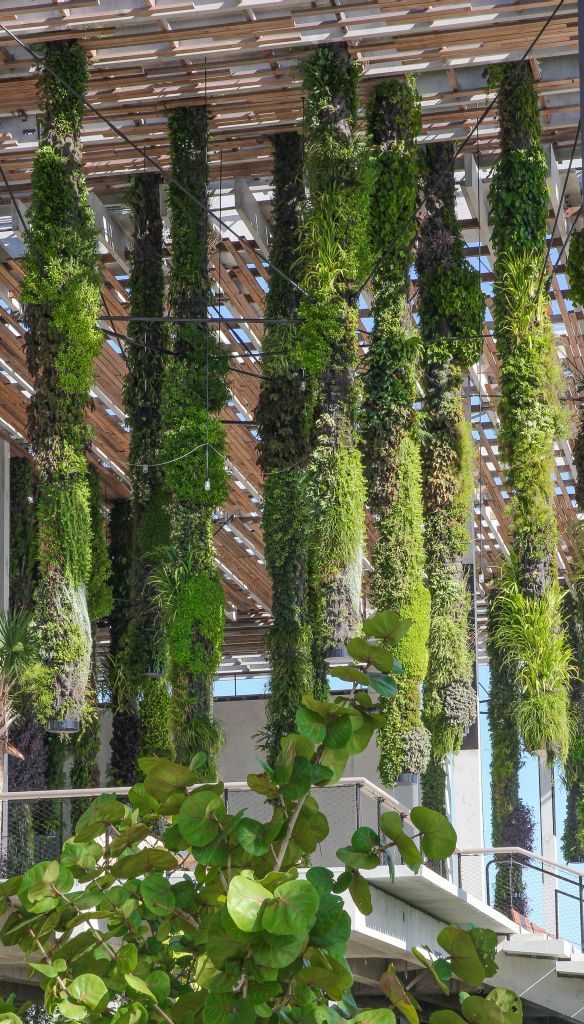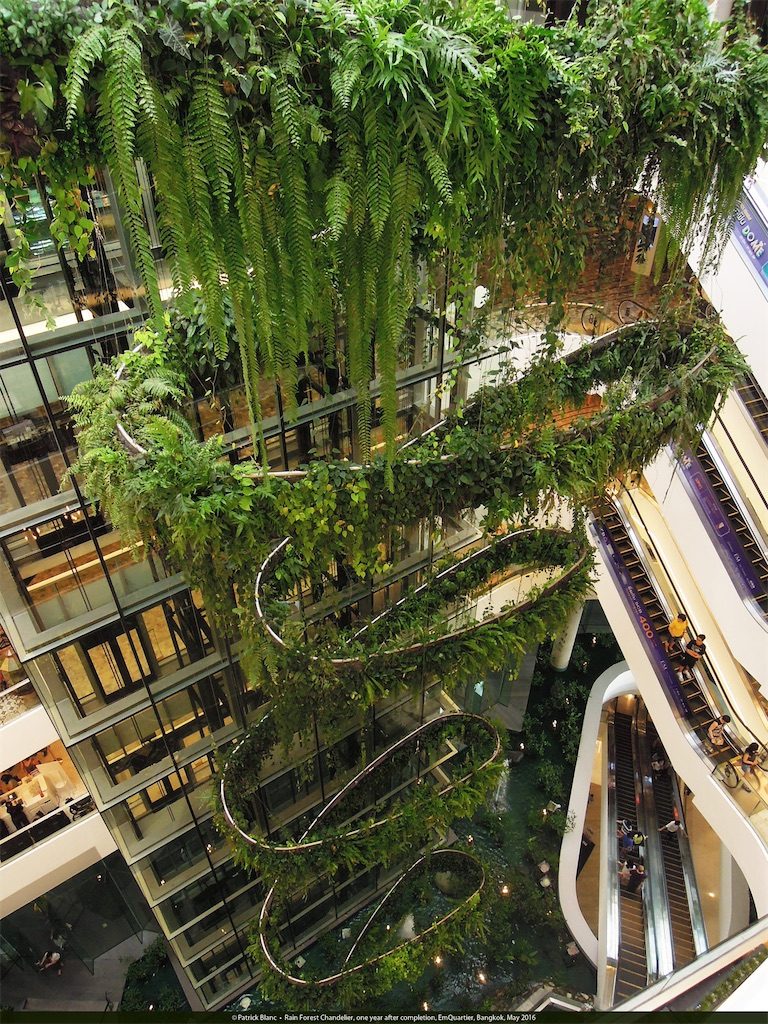The living walls shown here are examples of the work of Patrick Blanc, a world renowned French botanist and designer who has hundreds of installations around the world. Blanc draws inspiration from plants that naturally grow from cracks in rock and thrive on branches wherever water is present without the need for soil.
He is currently working at the French National Center for Scientific Research and specializes in plants from tropical forests. Patrick Blanc is known as a modern innovator of the living wall although he did not invent the concept. It was created by Stanley Hart-White, a professor of landscape architecture at the University of Illinois.
How living walls help
Whether it be living walls, green buildings, or vertical gardens, these works of plant art are saving the environment with their beauty. Living art can help clean air, reduce heat, and cut down on noise in urban areas. Because of the way that the vertical gardens are constructed and separated from the structure of the wall, there is little fear that the roots will damage the buildings. It works more like a second skin for the building which presents its own benefits.
The living walls, because of thermetic insulation, cut down on heating and cooling costs in the winter and summer. The introduction of plants in urban spaces allows humans to recreate a living system similar to the natural environment.
Jupiter, Sainte Geneviève Des Bois in Paris, France
This design, built in 2013, is part of a shopping mall in a town just outside of Paris. The design has an interior structure that includes metal, pvc, and felt. This, as many of Blanc’s works, is constructed with many different kinds of rainforest plants and is watered using a hydroponic system of water pumps that allow water to trickle down from the top.
Perez Art Museum in Miami, Florida
This piece is a collection of groups of eight suspended columns that descend from each side of the riverfront museum. The columns are meant to create a hanging forest effect that cleans the air and brightens the space. The museum includes a restaurant and bar, event space, and many modern art exhibitions. The space also offers touch tours for visually impaired visitors.
Emquartier in Bangkok, Thailand
This “rainforest chandelier” stretches 100 meters long and hangs in the new Helix Quarter of the Bangkok mall. The structure bends and twists its way down the center of the five story building. It completes its descent in a series of connecting pools. The Emquartier project was inspired, like many of Blanc’s works, by the rainforest. The mall includes over 400 shops, 40 restaurants, a gourmet supermarket, and a waterfall. It is located near Benjasiri Park, just outside of the city center.
One Central Park in Sydney, Australia
These two residential buildings inhabit the inner-city suburb of Sydney called Chippendale. The complex boasts its ability to connect city living with nature’s many benefits. Both buildings include plant covered porches and living walls that stretch upwards of ten stories high each. One Central Park also includes a mirror covered cantilever that collects sunlight and directs it towards the plant covered walls. At night the artist Yann Kersale lights up the walls with an LED art installation. There is also a pool and a public park included in the complex. All of the residences are currently occupied.
L’Oasis d’Aboukir in Paris, France
Standing 25 meters tall and constructed with 7,600 individual plants, this outdoor living wall has drawn a lot of attention. The wall took 6 weeks to build and is now so popular that it has its own Facebook page. The historic district is full of shops, restaurants, and museums. It is also right near the Louvre and the Seine river.
Quai Branly Museum in Paris, France
The Quai Branly Museum was designed by Jean Nouvel to be a space in which visitors are invited to become explorers themselves. The living wall, scattered with windows, becomes part of the building’s endeavor to confuse and interest visitors. The museum is committed to sustainable development and includes historical and contemporary works from around the world.
Pont Max Juvenal in Provence, France
Pont Max Jouvenal is unique because it is not a part of a building or a hanging facade. Instead this work attempts to beautify the ugliest parts of a city. The blank face of a bridge was transformed in 2008 to bring life and art to the streets and mundane infrastructure of Provence, France. Don’t you just love these examples of green living?
To see more of Patrick Blanc’s designs, visit his website.
Also See:
Designing Greenscrapers: Are vertical forests the future of urban life?
Is this Urban Farm in Japan the Future of Our Workplace?
Check out our coolest Sustainable Design and Innovative Tech Stories here.








